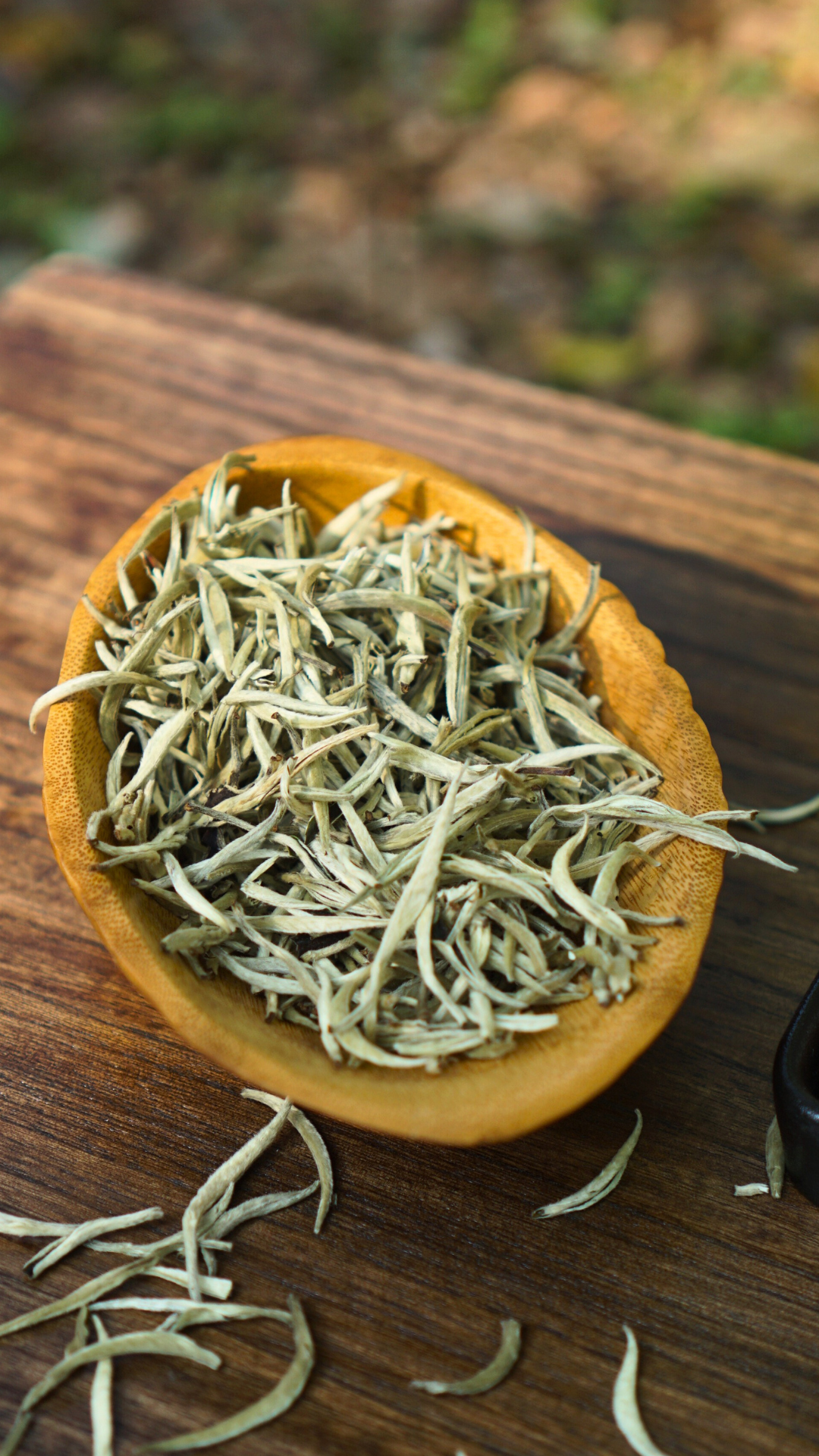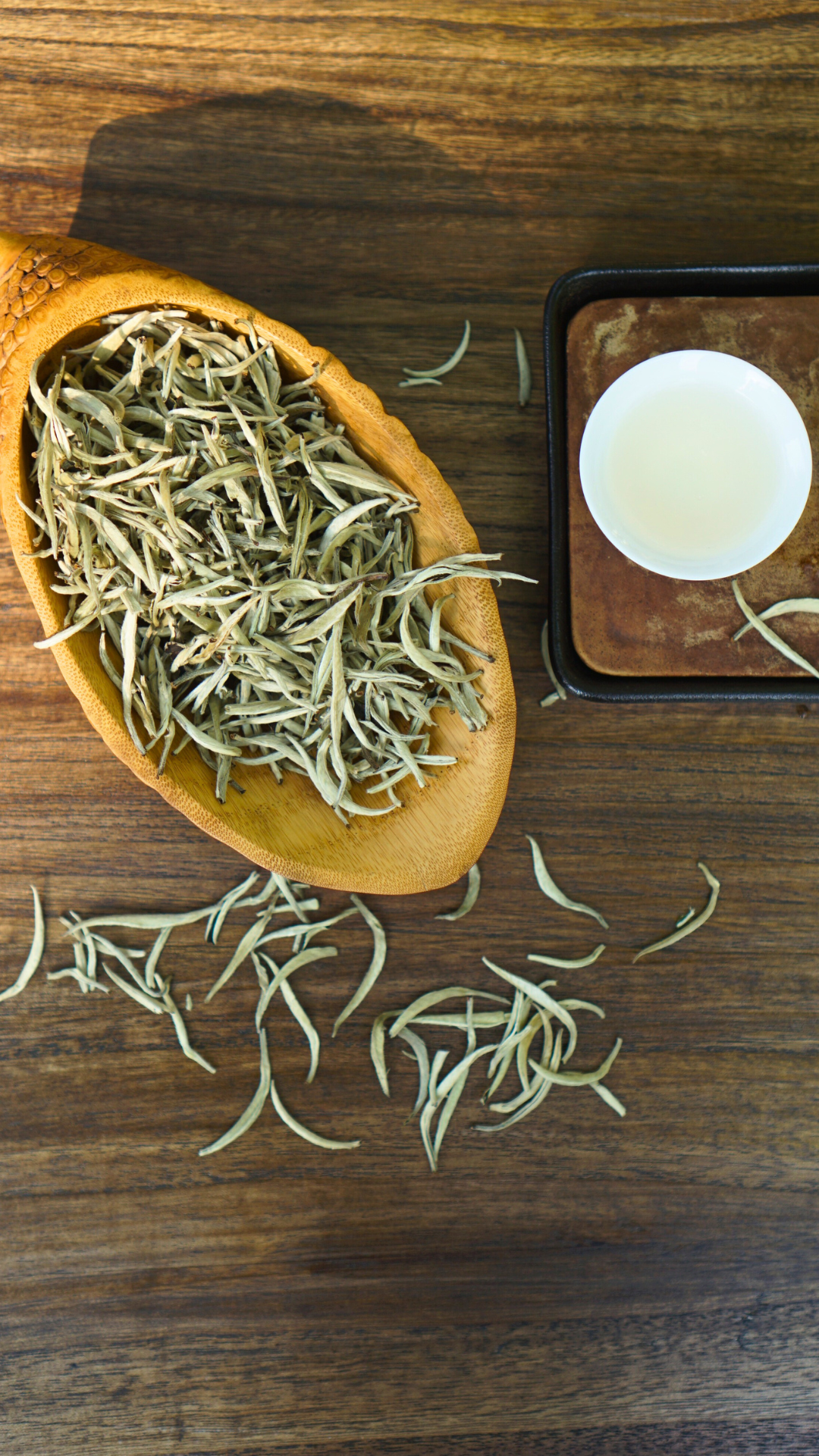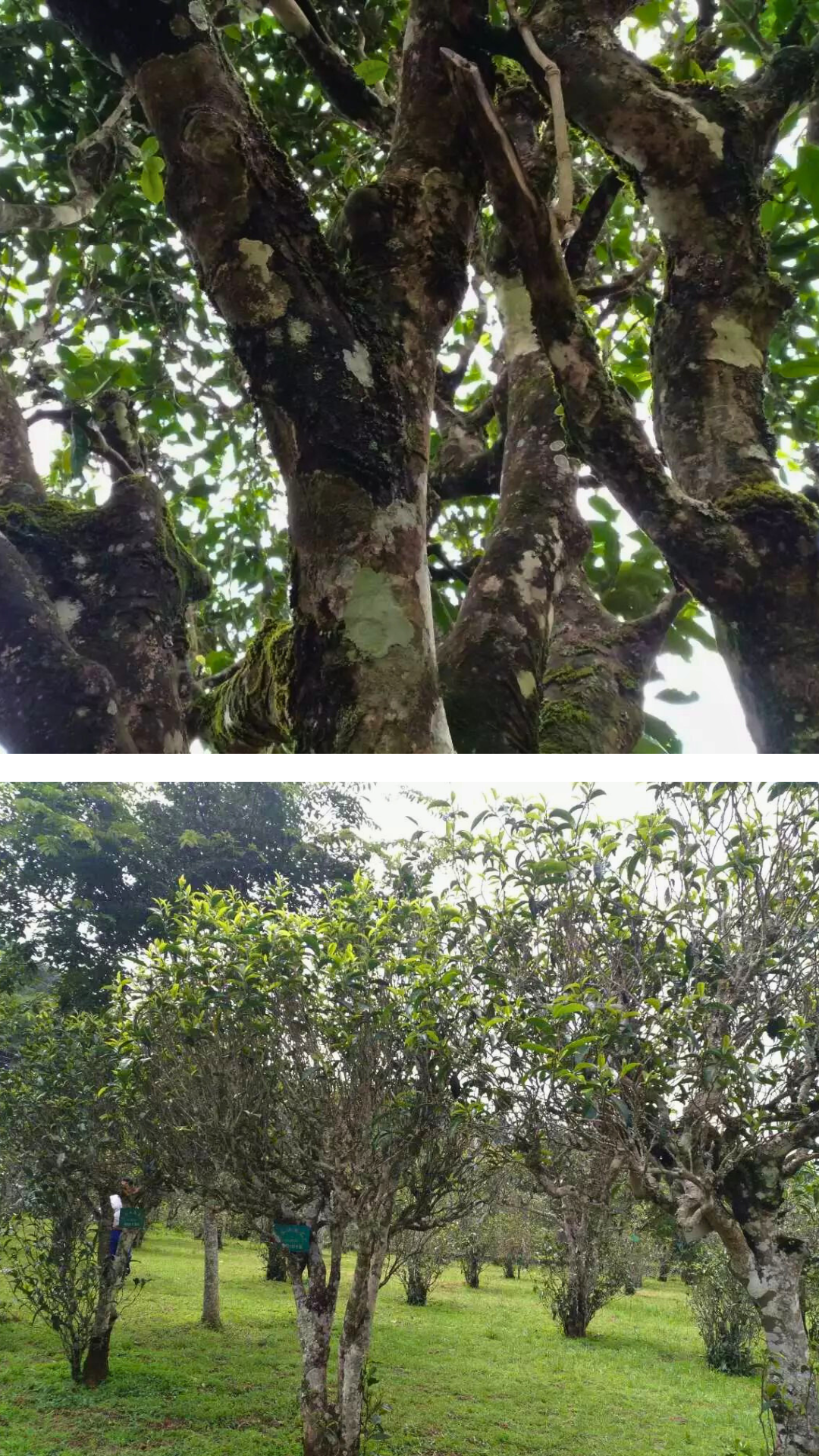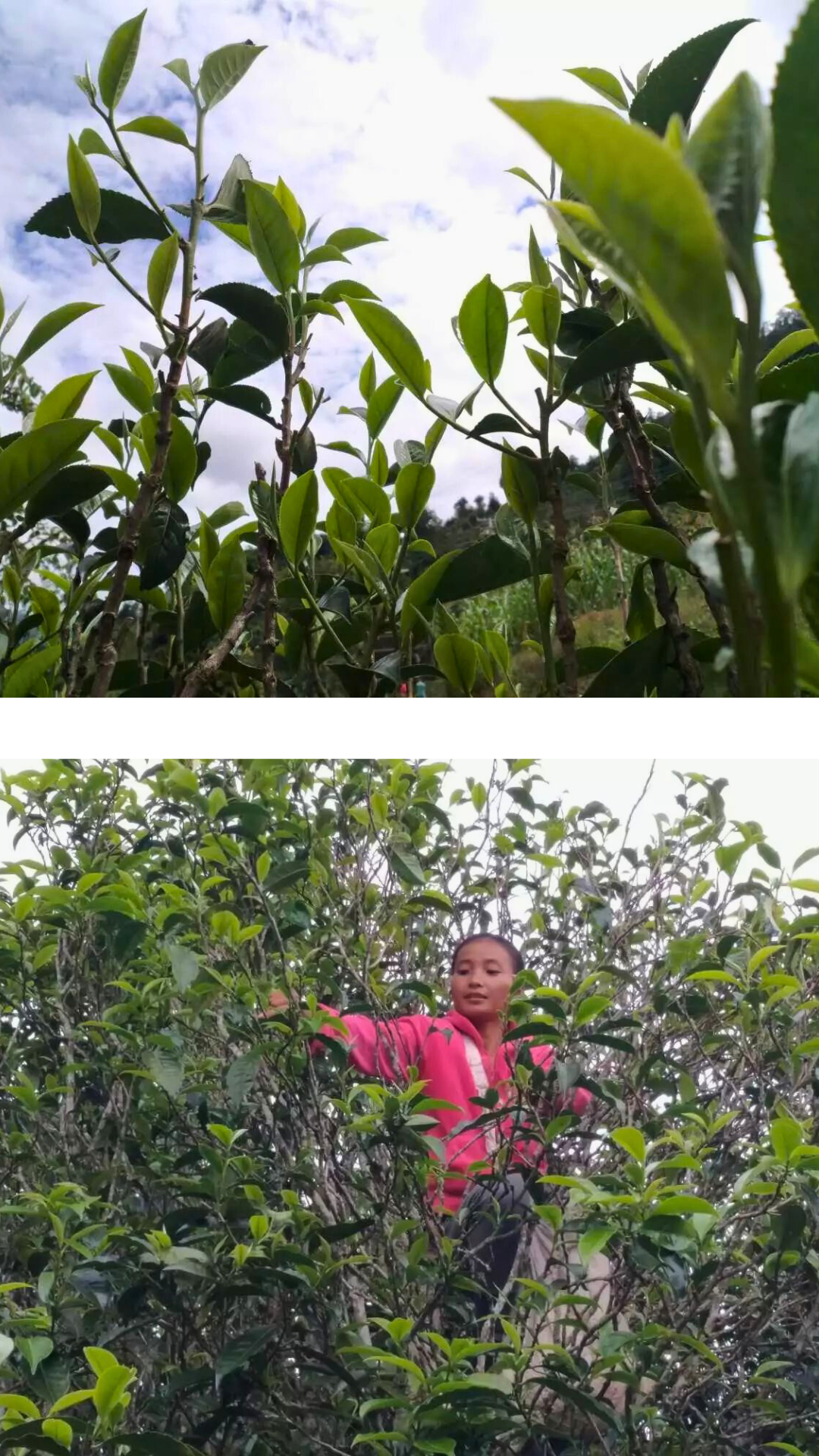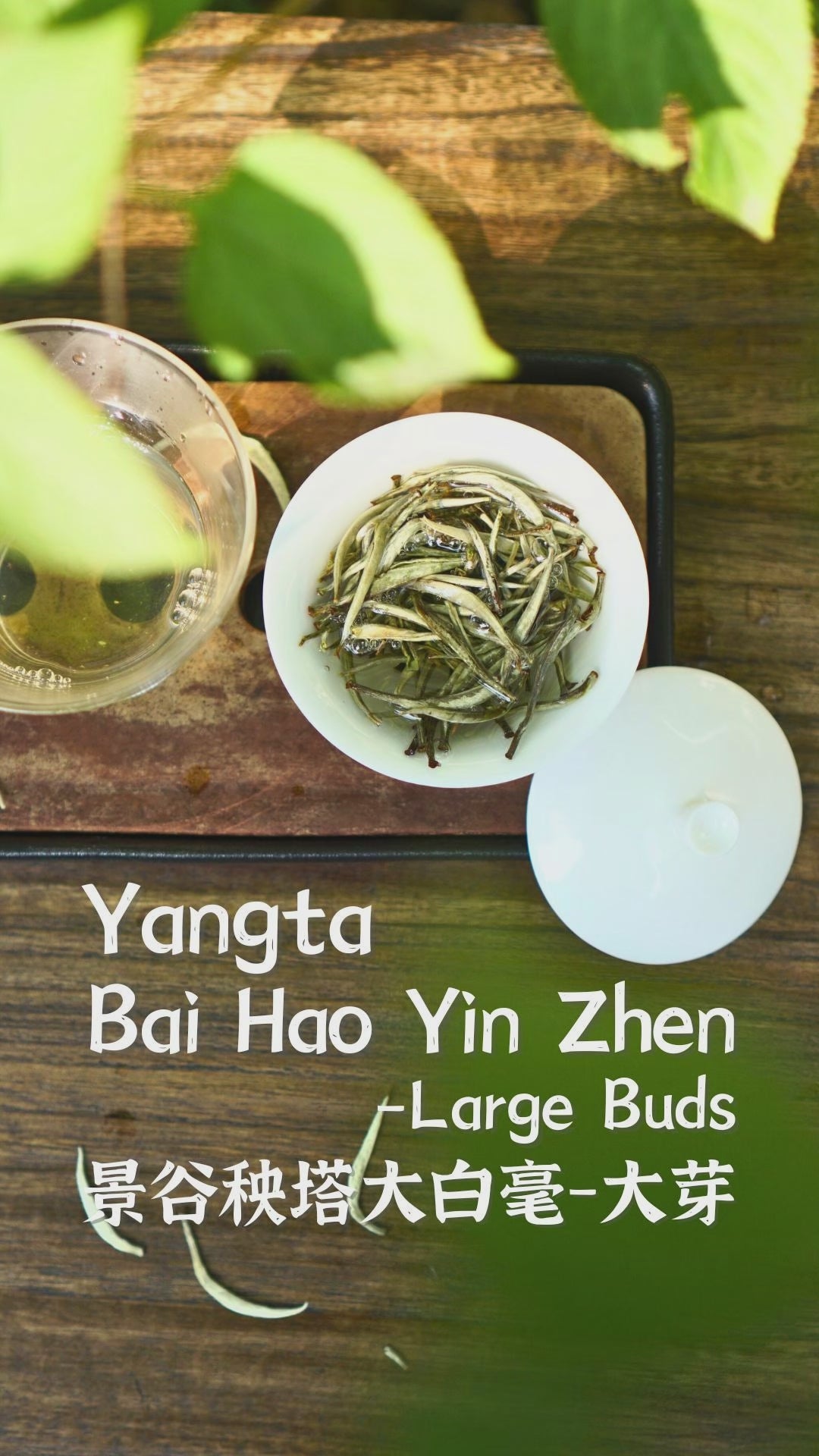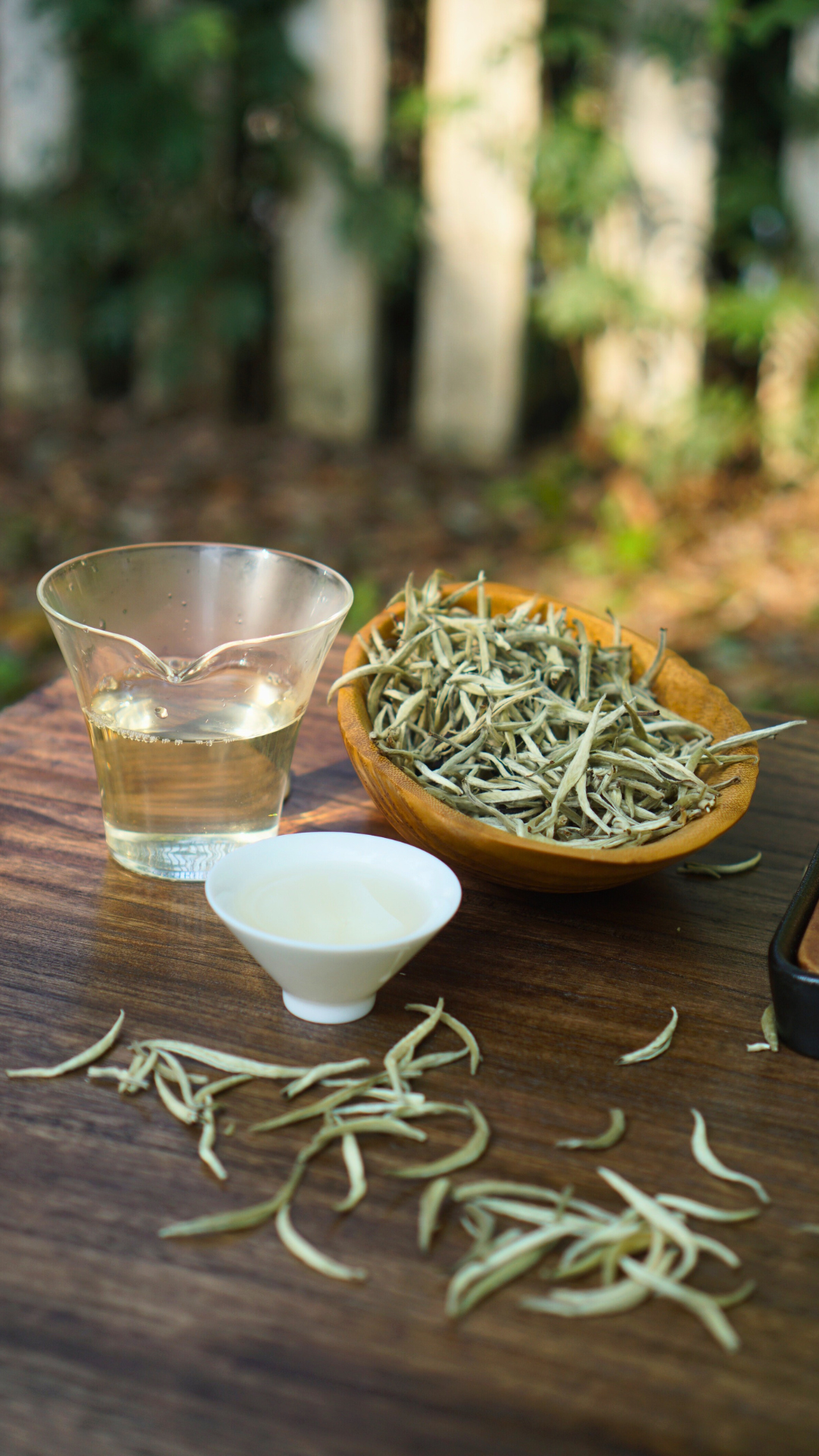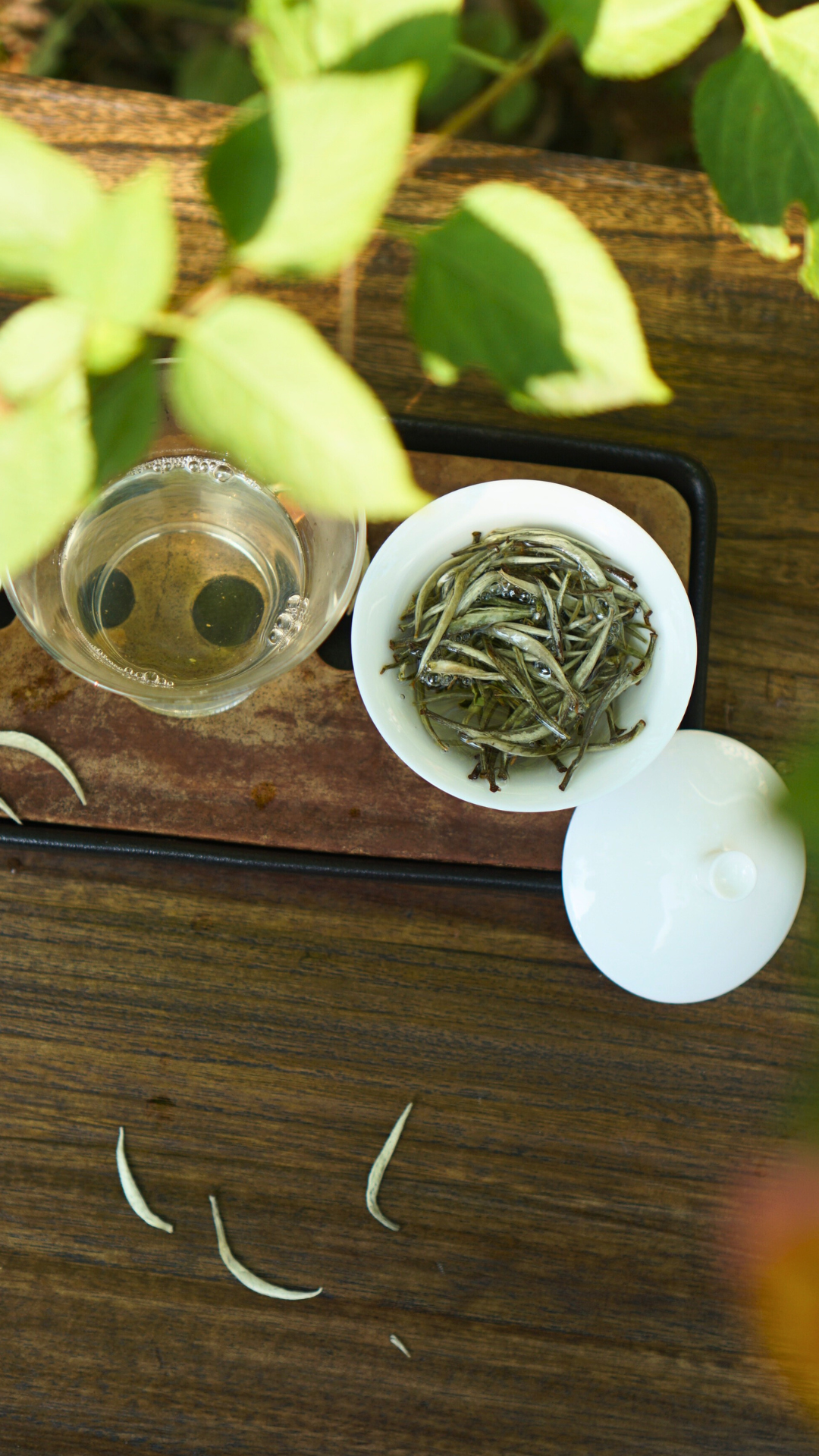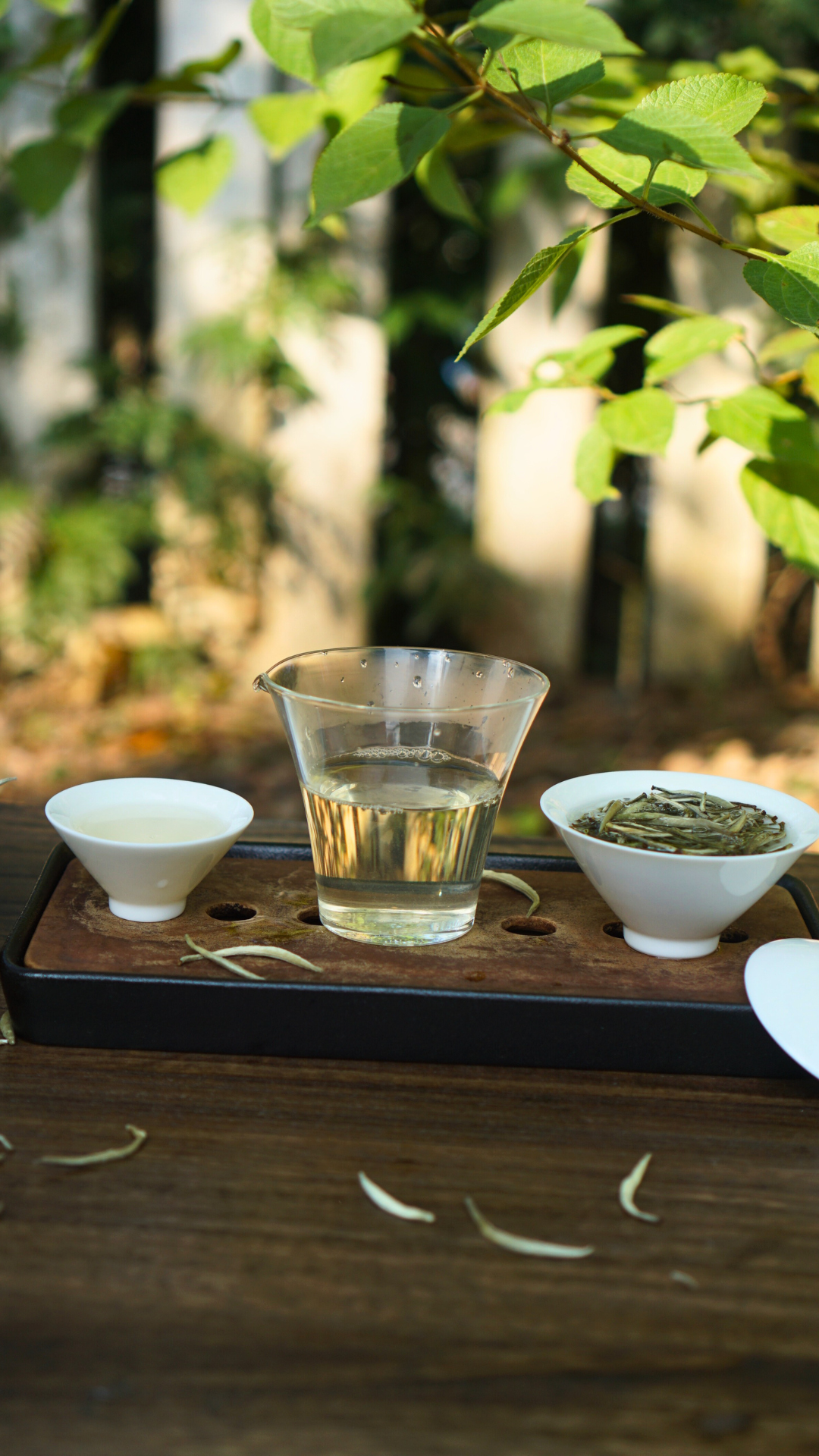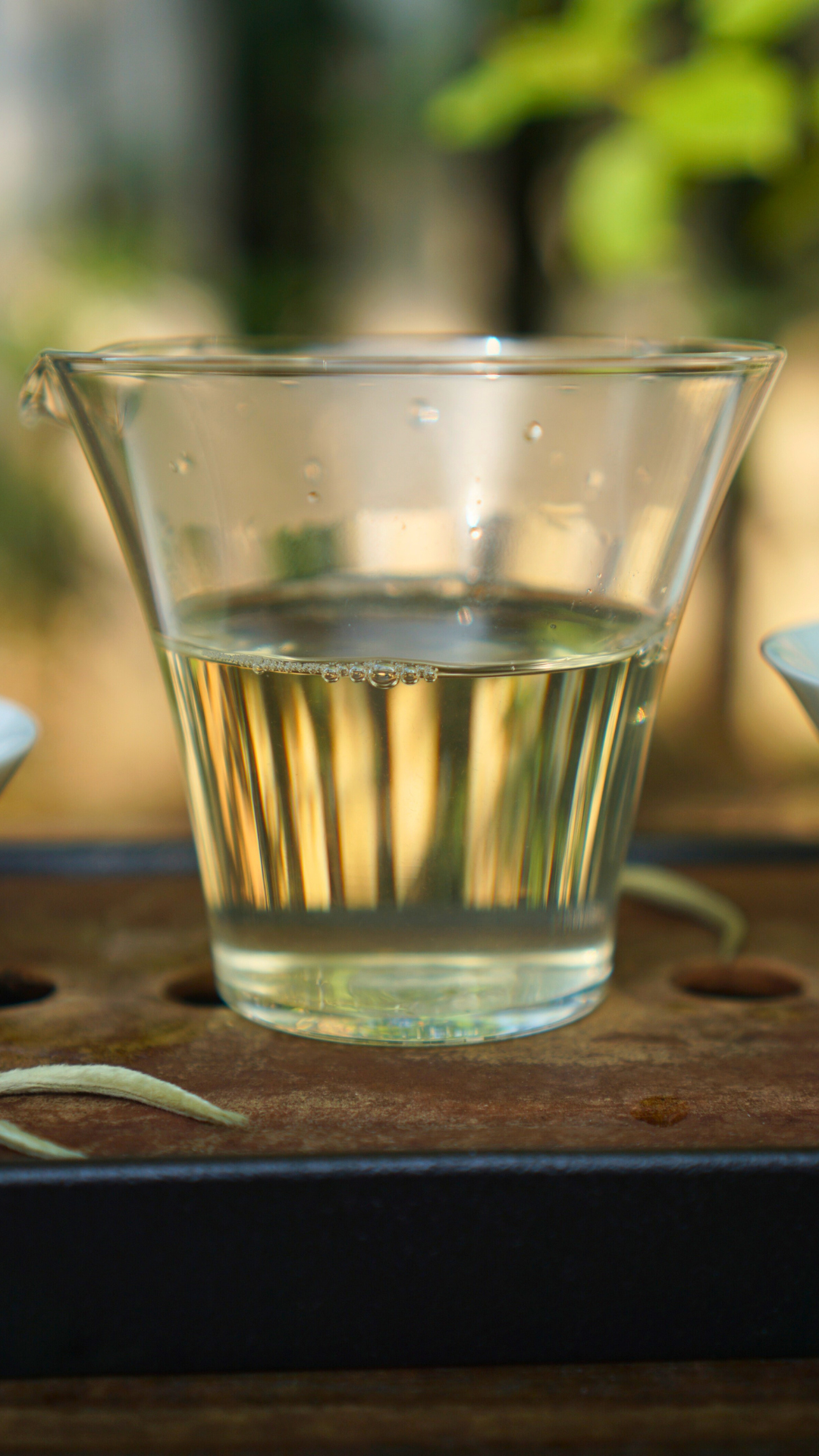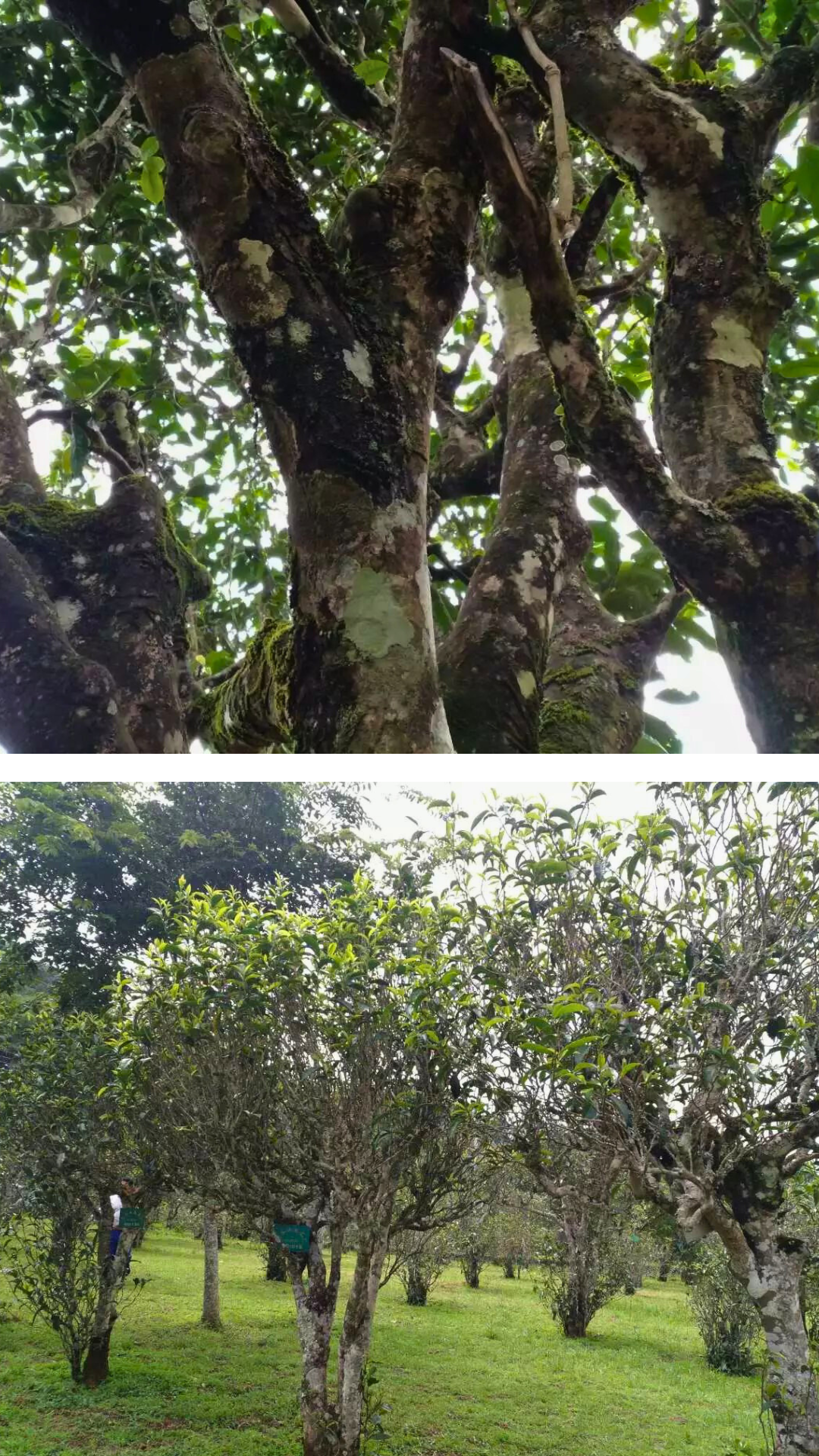Yangta Bai Hao Yin Zhen-Large Buds
Yangta Bai Hao Yin Zhen-Large Buds
景谷秧塔大白毫-大芽
This Yangta Baihao Yinzhen (Yangta White Downy Silver Needle) comes from a community of wild tea trees at an altitude of 1700 meters in Jinggu(景谷) County, Pu'er(普洱)City, Yunnan Province. The Tropic of Cancer passes through the county, which features high mountains and deep valleys with significant altitude differences. It is one of the original production areas and main producing regions of Pu-erh tea and the homeland of large-leaf white tea.
Yangta large-leaf white tea(秧塔大白茶) is produced in Yangta Village(秧塔村), Minle Township(民乐镇), Jinggu County(景谷县), and is named after its production area. It is a unique variety of Yangta. At an altitude of 1700 meters, Yangta Village is characterized by high mountains, frequent fog, and a cool climate. In this distinctive geographic environment, the buds and leaves of the tea trees grow a thick layer of fine hairs to adapt to their surroundings, giving the tea its exceptional quality.
Yangta has a history of tea cultivation spanning several centuries. During the Qing Dynasty, the local chieftain ordered meticulous production of the tea into "White Dragon Whiskers Tribute Tea,"(白龙须贡茶) which was offered to the imperial court and regarded as a rare delicacy by the palace at the time. The area still has over 400 ancient tea trees. The old trees remain today, with the largest ancient tea tree having a trunk circumference of 1.22 meters, a main trunk diameter of 0.28 meters, a height of 5.8 meters, and a crown spread of 4.6 meters.
This Yangta Baihao Yinzhen is covered in fine white hairs and is entirely made from the tender buds of the early spring harvest. The buds are plump, substantial, and densely covered in white hairs, with silvery-white strips and a fresh aroma.
In terms of taste and style, this Baihao Yinzhen belongs to the sweet and aromatic type, characterized by floral, fruity, and milky fragrances. Because only tender buds are used, it offers a markedly refreshing taste. When brewed, the tea infusion is a clear and bright yellow-green. The flavor is rich, fresh, and smooth, with floral and fruity aromas intertwined with subtle milky notes and a sweet aftertaste.
As the raw material is sourced from Yunnan's large-leaf tea variety, compared to white tea made from small-leaf varieties, it contains more nutrients and soluble substances in water, making it more durable for multiple infusions. Even after eight or nine brews, its fragrance lingers, and the tea soup remains bright yellow.
Furthermore, white tea made from large-leaf varieties is better suited for storage. After aging and transformation, aged Baihao Yinzhen exudes a sweet aroma reminiscent of honey dates, and the tea broth becomes richer and more robust.
This Yangta Baihao Yinzhen distinguishes between large buds and small buds based on the size of the strips in the finished dry tea, mainly for the sake of uniformity, neatness, and aesthetics in overall appearance. There is no difference in quality between the two. In terms of taste, the tea made from small buds is relatively delicate, with an aroma leaning towards floral notes. The large buds have better durability for multiple brews, with an aroma trending towards honey and milky scents. However, the overall difference is minimal.
🔗What are the differences between Yunnan white tea and Fujian white tea?
Picking and Processing
Picking and Processing

The production process of white tea generally consists of two steps: withering and drying, with withering being the key stage.
Withering can be divided into indoor natural withering, mixed withering, and heated withering. It must be flexibly adapted to the climate, and for sunny spring and autumn days or clear summer days without oppressive heat, indoor withering or mixed withering is preferred.
The refining process involves removing stems, flakes, wax leaves, red leaves, and dark leaves, then baking over a gentle heat until sufficiently dry. This enhances the tea’s aroma with a subtle roasted scent. When the moisture content reaches 4%–5%, the tea is packed while still warm. The hallmark of white tea processing is that it neither destroys enzyme activity nor promotes oxidation, instead allowing for mild natural oxidation while maintaining the delicate aroma of the tea buds and a fresh and brisk flavor in the brew.

- Picking
White tea is picked when temperatures allow for tender, fresh leaves with one bud and one unfolding leaf in a jade white color. The process involves picking early, picking tender leaves, picking frequently, and ensuring clean picking. Buds and leaves must be uniform in size and shape, and the stems kept short. The tea is handled gently during harvesting, placed lightly in bamboo baskets, and transported in bamboo containers.

- Withering
Freshly picked leaves are spread evenly on bamboo trays in a thin layer and should not be disturbed. After spreading, the type of withering—indoor natural withering, mixed withering, or heated withering—is chosen based on the climate conditions and leaf grade. When the leaves are 70%–80% dry, both indoor natural withering and mixed withering require sieving.

- Drying
Initial drying: Dryer temperature at 100–120℃ for 10 minutes. Cooling: Spread and cool for 15 minutes. Re-drying: Dryer temperature lowered to 80–90℃, with low-temperature long drying at around 70℃.

- Storage
Dried tea leaves should have a moisture content of 5% or less and be stored at room temperature.
Brewing
Brewing
The brewing methods for new white tea, such as Baihao Yinzhen(silver needle downy tips) and Bai Mudan(white peony), are basically the same as those for green tea. However, since white tea is not rolled, the tea juices are not easily extracted, so the steeping time should be relatively longer.

Generally, 3–5 grams of white tea can be placed in a colorless, transparent glass cup that has been rinsed with boiling water. Add 200 milliliters of boiling water. At the beginning, the tea buds float on the water's surface. After 5–6 minutes, some buds will sink to the bottom of the cup, while others will suspend near the upper portion of the tea infusion. At this point, the tea buds stand upright, crossing up and down, resembling stalactites; it is quite a spectacle. After about 10 minutes, the tea infusion turns golden yellow and can be enjoyed. During this time, you can enjoy the sight while sipping the tea, washing away worldly distractions and filling yourself with pleasant interest.

You can also use a white porcelain gaiwan. Add 3–5 grams of white tea and pour in 150 milliliters of 95°C hot water. Cover and steep for about 2 minutes, then pour the tea infusion into a serving pitcher.
If you prefer the light and delicate aroma and taste of white tea, you can pour out the tea infusion after steeping for just 20 seconds. For subsequent brews, gradually increase the steeping time.

Aged white teas, such as Gongmei and Shoumei, can be cooked:
Aged white tea can either be cooked directly or brewed a few times before cooking. Choose a suitable utensil for brewing tea, such as a ceramic teapot, iron kettle, silver pot, or glass teapot. Place a proper amount of aged white tea, such as Shoumei or Gongmei, into the pot and add room-temperature water. Heat it until boiling, and let it simmer for a few minutes. The cooking time can be adjusted based on personal taste. Pour the cooked tea into a fairness cup, then distribute it into smaller tasting cups for drinking.
*Note:*
New white tea tends to become astringent when cooked for too long, so it’s not recommended to cook new tea. Likewise, Baihao Yinzhen and Bai Mudan, which are relatively tender, are not suitable for cooking.

When cooking aged white tea, you can also add other ingredients, such as red dates, honey, goji berries, lemon, dried tangerine peel, fruits, or dried flowers (jasmine, chrysanthemum, rose, osmanthus, etc.). This adds a special flavor unique to each addition and can also provide certain health benefits. For example, red date white tea combines the heat-clearing, fire-reducing properties of white tea with the qi and blood-boosting effects of red dates. Mixing an appropriate amount of aged white tea with red dates helps to improve digestion and boost blood health, making it ideal for consumption during the autumn and winter seasons.
The cold-brew method is suitable for high-grade white buds, such as Baihao Yinzhen and Bai Mudan:

Find a suitably sized kettle or bottle. Add an appropriate amount of loose tea, with the quantity adjustable based on personal preference. Add sufficient cold water (filling the container is fine) and optionally some ice cubes. After 1–2 hours, it’s ready to drink, or you can refrigerate it overnight. By the next day, you’ll have a chilled, sweet, and mellow cold-brew tea.
Cold-brewed tea is very suitable for hot weather. However, for those with sensitive digestion or weak stomachs, it’s best not to drink too much cold-brewed white tea. It’s recommended for such individuals to drink more warm white tea instead.
White Tea Storage
White Tea Storage
White tea is easy to store, as it can be preserved for a long time under dry, light-proof, and odor-free conditions.
In Fuding's folk culture, there is a saying, "One year as tea, three years as medicine, seven years as treasure," suggesting that the older the white tea, the higher its medicinal value.
In fact, research comparing the health benefits of white tea stored for 1 year, 5 years, and 20 years has confirmed that with extended storage time, aged white tea demonstrates better effects in anti-inflammatory, antiviral, blood sugar-lowering, uric acid-reducing, and repairing alcohol-induced liver damage compared to fresh white tea. This is because, as the years go by, the flavonoid content in white tea increases, enhancing its antioxidant and anticancer effects.
Additionally, aged white tea is detoxifying without causing a cooling effect on the body and has a sweeter, smoother, and mellower taste compared to new tea.
The longer it is stored, the more its aroma evolves: fresh white tea from the same year has a unique "silver needle fragrance with honey notes," transitioning to a lotus leaf aroma after 3–8 years, a jujube-like fragrance after 8–15 years, and a herbal scent after 15 years or more.
Meanwhile, for high-grade white teas like Baihao Yinzhen (Silver Needle) and Bai Mudan (White Peony), the optimal drinking period is usually around 3 to 5 years.
After being stored for a certain number of years, the astringency of the fresh tea fades, leaving behind a sweet and mellow taste, making it ideal for consumption.
Good aged white tea has a liquor color resembling amber, bright and glossy. Its flavor is rich and full-bodied, smoother on the palate, with sweetness and viscosity gradually increasing. The dry leaves exude a sweet aroma, and upon careful observation, you can detect a subtle lotus fragrance.
The moment the tea is brewed, the liquor's golden hue is alluring. Upon tasting, the sweetness bursts on the taste buds, filling the heart with delight. It feels smooth and soothing, bringing a sense of serenity and physical comfort with every sip.

- Loose White Tea
- 500g/pouch
- Free Shipping
Couldn't load pickup availability
